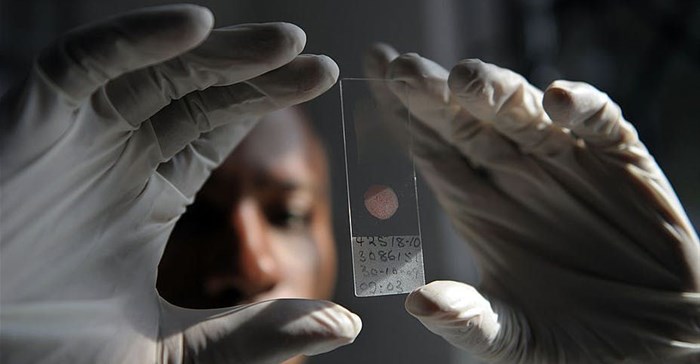
Top stories




Infections in this setting can happen in various ways. The virus can be directly transmitted between patients in close proximity, or by contact with contaminated hands or equipment. It can also happen indirectly if a healthcare worker becomes infected by one patient and goes on to infect another patient. Since up to 80% of those infected don’t show symptoms, it is entirely possible that staff and patients inside hospitals, doctors’ offices and care homes unknowingly infect others.
Infection prevention and control activities have been the mainstay of stopping healthcare related spread of infectious disease. For example, proper hand hygiene (with soap and water or alcohol hand rub) before and after touching patients reduces the risk of contamination between patients and between healthcare workers and patients.
Similarly, the correct disinfection of equipment used on multiple patients that the healthcare worker touches is key to controlling infection within a health facility. So too is the safe disposal of items like contaminated gloves.
But how good are healthcare facilities at maintaining even basic levels of prevention and control?
We conducted research looking at infection control practices in outpatient settings in Tanzania two years ago. We found that they were rarely done correctly. The most alarming results were for hand hygiene. This was performed only 6.9% of the times it should be, and this fell to only 1.3% if we also applied the requirement that the handwashing – or use of alcohol hand rub – lasted at least 20 seconds.
These figures suggest there is a critical need to address basic infection control behaviour inside health facilities.
We might hope that compliance will improve now that there is increased awareness of Covid-19 and how it is transmitted. But the higher burden on health facilities could make it harder for staff to do everything correctly if they are overrun with patients.
In our survey of 220 private and faith-based dispensaries, health centres and hospitals, fieldworkers spent six hours in each health facility. They observed provider-patient interactions in outpatient consultation rooms, laboratories, and injection or dressing rooms. They sat discreetly in the corner of the room, recording every time an infection control measure was required, and then whether or not it was done properly.
Reusable equipment, which comprised mostly stethoscopes and thermometers but also included otoscopes, was disinfected between patients just 4.8% of the time. Potentially infectious waste, including used gloves, swabs for cleaning patient skin and used dressings, was correctly disposed of in 43.3% of cases.
Compliance with correct glove use was somewhat higher at 74.8%. However, they were only used during 62.9% of contacts with a patient’s body fluid or mucous membranes, compared with 89.6% for higher risk outpatient procedures such as intravenous injections and wound cleaning.
These deficiencies were common in all types of health facilities. We didn’t find any variation in behaviour when we compared levels (dispensaries, health centres and hospitals), ownership (private for-profit versus faith-based organisations) or location (the main commercial city of Dar-es-Salaam, other urban or peri-urban locations, and rural areas).
The deficiencies were not necessarily the fault of healthcare workers themselves. Often facilities simply don’t have the necessary supplies (like gloves or handrub) or infrastructure (sinks with running water) for them to practise correct infection control. But having the right equipment is not enough – getting health workers to use it is also a key challenge.
Our data showed that practices varied substantially by type of health worker, particularly when examining hand hygiene and glove use practices. Nurses, midwives and medical assistants all had much better compliance with both hand hygiene and correct glove use than clinical officers. Female health workers were better at hand hygiene than their male colleagues, and younger health workers were more likely to use gloves correctly than older ones.
This helps us understand what types of health worker could be prioritised in the design and targeting of infection prevention and control interventions.
Tackling infection control requires urgent action. Firstly, a huge injection of infection prevention and control supplies is needed to cover both outpatient and inpatient care in public and private facilities.
Secondly, we must support interventions which will be effective at changing behaviour. This is notoriously difficult to achieve. Such interventions need to be intensive and multi-faceted, and include training, feedback, goal-setting, incentives, and the introduction of a “safety climate”.
Finally, responsibility must be taken at the highest level in health systems. Leaders need to acknowledge that it is only by making infection control a top priority, and allowing themselves to be accountable for ensuring improvements, that the necessary progress will be made.
These are big challenges but health systems have to be part of the solution, not the problem, when it comes to the global pandemic. Infection control practices are stubborn and hard to change. But COVID-19 could be a chance for a shift in norms which could bring long-term gains for protecting patients.
This article is republished from The Conversation under a Creative Commons license. Read the original article.![]()

The Conversation Africa is an independent source of news and views from the academic and research community. Its aim is to promote better understanding of current affairs and complex issues, and allow for a better quality of public discourse and conversation.
Go to: https://theconversation.com/africa